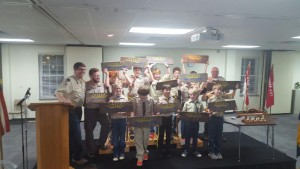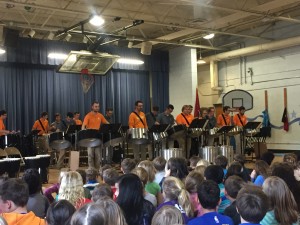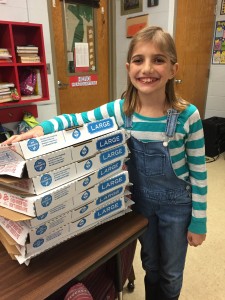Human_Computer Led School from Jordan Haney on
Leave a comment
UT Steel Drum Band from Jordan Haney on Vimeo. This is what we did this week!! First I got my Arrow of light award for boy scouts!! We finished our court cases we lost thought. And finally we had tug of war tryouts and I got into the finals!! We got our letters from South Korea. Also we had a valentine party. We finished our song. y I Am Against Pluto By: Hayden Vance In the two recent articles “What is a planet” by NASA and “When is a planet” by Daniel Santos, the authors discuss Pluto’s classification. The issue is some people have different opinions about the decisions that were made. I strongly believe that Pluto shouldn’t be a planet because of 2/3 criterion and its awkward orbit. I strongly believe that Pluto should not be a planet because Pluto doesn’t meet third criterion. Pluto has not cleared its neighborhood. To clear its neighborhood, it must be big enough to pull neighboring objects into itself, or sling-shot them around the planet and shoot them off into outer space. Because of this evidence, I strongly believe Pluto should not be a planet. My second and final reason is Pluto has a awkward orbit . Pluto’s orbit flows into Neptune’s orbit. My source states that its orbit is tilted a little bit. Sometimes people think there is a invisible disk. It also flows around a planet that NASA found called Eris’s orbit. Because of this evidence, I still strongly believe Pluto should not be a Planet. In conclusion, I strongly believe that Pluto should not be a planet. In the two recent articles “What is a planet” by NASA and “When is a planet” by Daniel Santos, I found evidence in these texts that helped support my opinion. Pollution By: Hayden Vance Have you ever wondered how much pollution and plastic cans are in the ocean is in the world? Well, I am going to compare and contrast in Drinking Water: Bottled or from the Tap? by Catherine Clarke Fox and Art for Ocean Animals by Elise Jonas-Delson. They are similar and different in numerous ways. In this essay I am going to compare and contrast in Drinking Water: Bottled or from the Tap?by Catherine Clarke Fox and Art for Ocean Animals by Elise Jonas-Delson. In this paragraph I will be discussing the similarities of Drinking Water: Bottled or from the Tap? by Catherine Clarke Fox and Art for Ocean Animals by Elise Jonas-Delson. My first reason is the both talk a bout water pollution. Both have sentences to try to stop people to stop littering. This is what was in my sources state. “In order to make all these bottles, manufacturers use 17 million barrels of crude oil. So It would be better to use tab water and kitchen faucet water. That’s enough oil to keep a million cars going for twelve months. But maybe if they realized the problems it causes, they would try drinking from a glass at home or carrying water in a refillable steel container instead of plastic. Plastic doesn’t break down and become absorbed by the environment. Instead, sunlight breaks it down into pieces about the size of plankton, which are tiny organisms that float in the sea. When people spot litter on beaches, they drop it off at Artula Institute for Arts and Environmental Education, in Bandon, Oregon.” Both of them talk about them trying to stop water pollution. In the next paragraph I will be discussing the differences. In this paragraph I will be discussing the differences. The first difference is in Art for Ocean Animals by Elise Jonas-Delson it is water pollution in the ocean. Another difference is in Drinking Water: Bottled or from the Tap? by Catherine Clarke Fox the pollution is about the tab, kitchen faucet, and bottled water. One is in Bandon, Oregon. The other on is in other cites. This is what was in my sources. “What do you do when you see litter on the beach? You pick it up, of course. But artist Angela Haseltine Pozzi doesn’t throw it away. She uses the trash to create giant sculptures of marine animals. The project is called Washed Ashore and its goal is to raise awareness about the effects of littering on ocean animals. If your family is like many in the United States, unloading the week’s groceries includes hauling a case or two of bottled water into your home. On your way to a soccer game or activity, it’s easy to grab a cold one right out of the fridge, right? Imagine a water bottle filled a quarter of the way up with oil. That’s about how much oil was needed to produce the bottle. So why don’t more people drink water straight from the kitchen faucet? But all those plastic bottles use a lot of fossil fuels and pollute the environment. In fact, Americans buy more bottled water than any other nation in the world, adding 29 billion water bottles a year to the problem. In order to make all these bottles, manufacturers use 17 million.” The plastic bottles we use we should recycle them because if we don’t we don’t know how much pollution could get into our air. In this paragraph I explained the differences in Drinking Water: Bottled or from the Tap?by Catherine Clarke Fox and Art for Ocean Animals by Elise Jonas-Delson. In conclusion, Both paragraphs can be very helpful to try to stop water pollution. If we don’t start to recycle now our water could be entirely filled with pollution. We could just be drinking water that is filled with pollution. So if we start today we could get all of the pollution out of our water. This is where I got my evidence Drinking Water: Bottled or from the Tap? by Catherine Clarke Fox and Art for Ocean Animals by Elise Jonas-Delson. Without these articles we wouldn’t be trying to stop water pollution from our world. These articles where they are similar and different in numerous ways. Rescue Dogs By: Hayden Vance Have you ever thought how rescue dogs can help people? Well, i am going to compare the 2 articles “Hide-and-Seek School” by Vivienne Lenk It’s a Dog’s Life” by Rebecca Upjohn Snyder. It’s a Dog’s Life” by Rebecca Upjohn Snyder talks a bout how dogs can help humans, And in “Hide-and-Seek School” by Vivienne Lenk it talks about how dogs are getting trained to get people out of four or five feet of snow. In this essay I will compare and contrast Hide-and-Seek School” by Vivienne Lenk It’s a Dog’s Life” by Rebecca Upjohn Snyder. In this paragraph I will be discussing the similarities of Hide-and-Seek School” by Vivienne Lenk It’s a Dog’s Life” by Rebecca Upjohn Snyder. The first similarity is both stories talk about training dogs to help people when they are in trouble. Both dogs are very talented in their own ways. The text shows that dogs are ready for action when they are needed. If I was ever in trouble I would want those dogs to help me. During the herding demonstrations he gives all over the Northeastern USA, he calls children (and sometimes adults) from the audience into the ring and invites them to try herding a small group of sheep into a pen. They are energetic and very focused on working. They use their eyes to control the animals. “They are considered the smartest dogs in the world.”Although they don’t seem like much but they are a big help. In the next paragraph I will talk about the differences. In this paragraph I will be discussing the differences Hide-and-Seek School” by Vivienne Lenk It’s a Dog’s Life” by Rebecca Upjohn Snyder. The first difference is that in It’s a Dog’s Life” by Rebecca Upjohn Snyder the dog is a Border collie and in Hide-and-Seek School” by Vivienne Lenk the dogs are Rube, a golden retriever mix, and Rudy, a Labrador mix, are veterans of the class. They’ve passed their tests and are certified avalanche rescuers. Their classmates—Roux, a golden retriever, and Kodi, an Australian shepherd—are working toward certification. In Hide-and-Seek School” by Vivienne Lenk is in Colorado in the mountains saving. With goats they work closer and must be more aggressive as goats will stand their ground. In Hide-and-Seek School” by Vivienne Lenk they are in Colorado Mountains, And in It’s a Dog’s Life” by Rebecca Upjohn Snyder they are in Wellscroft Farm in New Hampshire. n this paragraph I discussed the differences Hide-and-Seek School” by Vivienne Lenk It’s a Dog’s Life” by Rebecca Upjohn Snyder. In conclusion, Both the rescue dogs are very helpful. I don’t know what I would do without these dogs. And if I was trapped I would want to be saved by one of those rescue dogs. Both the dogs are very helpful in there own ways. They can do so much but we don’t know. So we can help them by training to help people. Steel Drums From UT
My Awesome 25th Week in 5th Grade
My Second Song
My Awesome 24th Week of 5th Grade
 And that is what I did this week!!
And that is what I did this week!!My Opinion on Pluto!!
My Opinion on Pollution!
My Opinion on Rescue Dogs!
My Grammar Song
My Awesome 22nd Week of 5th Grade!!

